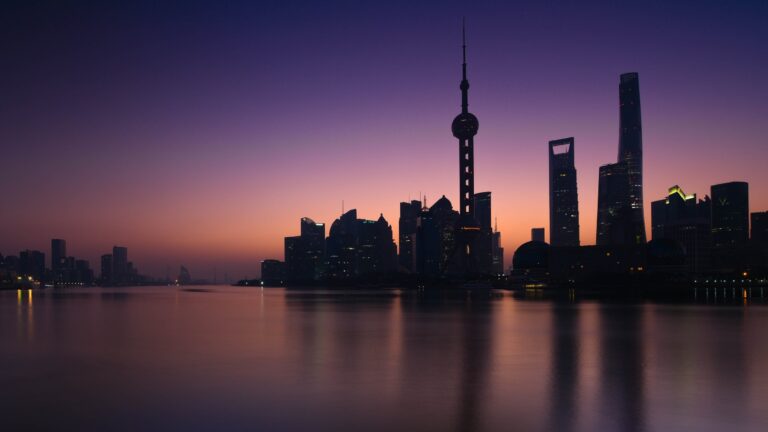
Editor’s note: This personal story of God’s faithfulness was shared by two adult missionary children at a recent discipleship conference for Chinese house church leaders. This story is a reminder that, although we humans often do not understand his methods, God is true to the good work he began in China many years ago.
This testimony has been edited for length and clarity.
Martha L.
Shalom, brothers and sisters. My name is Martha L., and my older brother is Russ S. My husband, children, and church friends have helped me be here, and send their greetings to you. Russ and I will share with you the story of our missionary family.
Never miss a story
I was born in Xichang, Sichuan, in April of 1950 in my father’s office, because there was no hospital. One month before my birth, the city was captured by the Communist Army. Our parents were part of a small group of missionaries who were burdened to bring the gospel of Jesus Christ to the Ningsu area, including the Nuosu and the Yi people. They expected to spend their lives planting churches, beginning in Xichang, Huili, and Lugu. Our parents, Bill and Flossie S., studied Mandarin in Chengdu at West China Union University. China was in a civil war at the time, which made living conditions difficult for Chinese and foreigners alike. After one year of study, Bill, Flossie, and son Russ flew to Xichang in the mission plane called St. Paul. They hoped to escape the mounting conflict by traveling to this remote and out-of-the-way place. Our parents immediately joined in the work of evangelistic meetings, Sunday worship services, children’s ministry, and prayer meetings.
Soon, the city of Xichang began to have the military presence of the Nationalist Army. The economy was extremely inflated and regular communication lines were cut, leaving the city isolated from the outside world. On March 27, 1950, the missionaries noticed the soldiers’ uniforms had a red star. At midnight the night before, the city had been occupied by the new government without one gunshot. The new government told the missionaries they could continue their work if they followed two rules: obey the new government’s policies, and do not spy for other countries. Church meetings were all scheduled during the day as a precaution. In May, our father helped train and prepare 11 more persons for baptism. The church grew to 60 worshippers.
The big event of the summer in 1950 was a Bible class for children. Because of mounting tensions, the missionaries did not know how many children would be allowed to participate. They were delighted that 70 children, ages five to 14, came to hear the Bible lessons taught and to participate in Bible memory, singing, playing games, and doing crafts. In October 1950, our mother led her first ladies’ prayer meeting in Mandarin.
However, by December, government restrictions became stricter. They limited travel, imposed evening curfews, and required those persons attending church meetings to register. The government also scheduled mandatory meetings to compete with the church meetings. On Jan. 16, 1951, the three mission stations, the chapels, and the missionary homes were thoroughly searched. Our father was taken numerous times to the police station for interrogation. Our mother never knew if he would come home, because a leader of the mission had previously been imprisoned. One day, dad was taken early in the morning, and not returned to their home until evening. The officials believed he was a spy for America. America was at war on the Korean peninsula.
Russ S.
One day, a church elder was seen speaking with our father. That elder was taken to Xichang Square and shot to death. Immediately, our parents pleaded for exit permits. The missionaries finally realized their time in China was over.
Martha
They deeply desired to complete the work. However, Chinese believers’ lives were in danger if they associated with the missionaries. After the missionaries completed detailed exit applications, the new government gave no indication when they could leave. The officials froze their money, which meant no money to buy wood or food. Their Chinese friends risked their lives to be sure they had food, and wood to cook it. Finally, late in the day on Sept. 15, 1951, exit permits were granted. They were told to be ready early the next morning to join a large group traveling to Chengdu. (Staying in large groups was necessary for security.)
The missionaries’ hearts broke to leave their Chinese brothers and sisters. No planes were flying, and roads and bridges were unpassable. There were no trains. They hiked the first 14 days through the Jianchang Valley, a distance of 300 miles to Ya’an. Our mother was seven months pregnant with our brother, Ralph. She was given a donkey to ride. My brother was 4 and I was 1, and we rode in a huagan, or litter.
Our carriers hiked more swiftly than the larger group, of eight missionary adults, 11 missionary children, a hundred mules, and our soldier escorts. Each morning, the group decided in which village they would sleep overnight. They left early in the morning, when it became light. Each morning our parents placed Russ and I in our huagan chairs with a little lunch, and prayed for God’s protection. The huagan carriers would arrive hours before the larger group. Our parents found us unattended in the town square, because our carriers had gone to the opioid den. One evening, the mule workers and social escorts filled the village, so the missionaries made camp on a hillside outside the village. Suddenly, a horse stampede came galloping through the area where the children were playing. A nearby Chinese man rescued Russel and me just in time. Our parents gave thanks we were still alive. We were totally frightened and bruised.
As mother awoke each morning to more mountain hiking, she looked at the majestic mountains and took comfort from Psalm 121. One day, when crossing the rushing streams, a baggage carrier stumbled. Our father rescued him from drowning. However, their belongings were lost down the stream, including pictures of us with our Chinese friends from Xichang. Only on the last day of their walk before reaching Ya’an did they have long flat roads. The first ride in a motor vehicle was a freight truck powered by rice alcohol. They sat on top of the freight, then they took a riverboat, and finally they rode a train from Guangdong to Hong Kong. The entire trip took 31 days. From Hong Kong, our parents traveled to Manila, where the Chinese Grace Christian School and Church needed a pastor and teachers.
This temporary position in Manila gave them time to find another place needing church planting. The province south of Manila had no evangelical witness. After many, many delays, church planting began in the capital city of Laguna, using a kindergarten for outreach. While working with the talented Filipino teacher, our mother talked about her burden for the Chinese in West China. After a number of years, this co-worker felt God leading her to tell the good news in western China. She went to the Association of Churches, and shared her burden to teach there. The church leaders agreed to send her, and adopted that area as their mission focus. This was 40 years after we had left China. God continues to use Filipinos to bring the gospel to the Chinese and Nuosu of Sichuan Province.
In 1984, hearing there were Christians in Xichang, our parents, Russ and his wife, and I (as well as others who had left 33 years earlier) visited Xichang. Our father brought with him his Chinese Bible. We went to the only church in Xichang and met with the leaders. Our father gave them his Bible. The pastor clasped it to his heart and immediately walked to his desk and locked it in the drawer. This was the most meaningful part of that trip for me. The apostle Paul writes in Phil. 1:6: “And I am sure of this, that he who began a good work in you will bring it to completion at the day of Jesus Christ.” This was our father’s verse of comfort when forced away from the work in China that had just begun.
Russ
As Martha has shared our story, we are both so grateful and humbled to have been a part of God’s story in China in a small way. God began a great work in China many, many years ago, and today, you are the evidence of what God began many years ago. Phil. 1:6 is a great promise from God; a promise for you and for the whole church in China. That verse kept my parents going even when they had to leave China, as they remembered it was God who started the work. It was not their work, it was God’s work, and you are a wonderful evidence of that promise.
Thank you, thank you, thank you for your faithfulness. Your brothers and sisters around the world watch you with great love and confidence that you will be true to our Lord Jesus Christ. I know you are facing some difficulties now as Christians, and you may face greater difficulties in the near future. God is for you. His promise is that he is with you. Martha and I will think of you and pray for you, and I know many others in the global church will be doing the same. God has begun a good work in you, and he will complete it. He will be with you to the very end. We thank God for you.
Russ and Martha
Praise God. God bless you. We love you.
FOR REFLECTION
Russ and Martha’s mother took comfort from the words of Psalm 121, which begins: “I lift up my eyes to the hills. From where does my help come? My help comes from the Lord, who made heaven and earth.”
Have circumstances in your life driven you to see God as your help and keeper? How so?































